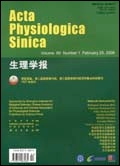
“Epilepsy is one of the most common chronic neurological disorders in dogs characterized by recurrent seizures. The endocannabinoid (EC) system plays a central role in suppressing pathologic neuronal excitability and in controlling the spread of activity in an epileptic network. Endocannabinoids are released on demand and their dysregulation has been described in several pathological conditions. Recurrent seizures may lead to an adverse reorganization of the EC system and impairment of its protective effect. In the current study, we tested the hypothesis that cerebrospinal fluid (CSF) concentrations of the endocannabinoids anandamide (AEA) and 2-arachidonoyl glycerol (2AG) are altered in epileptic dogs. Concentrations of AEA and total AG (sum of 2AG and 1AG) were measured in 40 dogs with idiopathic epilepsy and in 16 unaffected, healthy control dogs using liquid chromatography combined with tandem mass spectrometry.
RESULTS:
AEA and total AG were measured at 4.94 (3.18 – 9.17) pM and 1.43 (0.90 – 1.92) nM in epileptic dogs and at 3.19 (2.04 – 4.28) pM and 1.76 (1.08 – 2.69) nM in the control group, respectively (median, 25 – 75% percentiles in brackets). The AEA difference between epileptic and healthy dogs was statistically significant (p < 0.05). Values correlated with seizure severity and duration of seizure activity. Dogs with cluster seizures and/or status epilepticus and with seizure activity for more than six months displayed the highest EC concentrations.
CONCLUSION:
In conclusion, we present the first endocannabinoid measurements in canine CSF and confirm the hypothesis that the EC system is altered in canine idiopathic epilepsy.”
https://www.ncbi.nlm.nih.gov/pubmed/24370333
“In conclusion, we demonstrated an elevation of CSF AEA concentrations in dogs with idiopathic epilepsy. The highest AEA concentrations were found in dogs with severe seizures and a long disease history. Possibly, the activation of the EC system serves as a counter-mechanism in order to regulate the seizure-threshold in epilepsy. However, the EC system can either alter or be altered by seizure activity, so that further, prospective studies are warranted to investigate pathological mechanisms. Despite endocannabinoids can be synthesized “on demand”, the EC system should be considered for development of new treatment strategies against epilepsy.”
https://bmcvetres.biomedcentral.com/articles/10.1186/1746-6148-9-262









